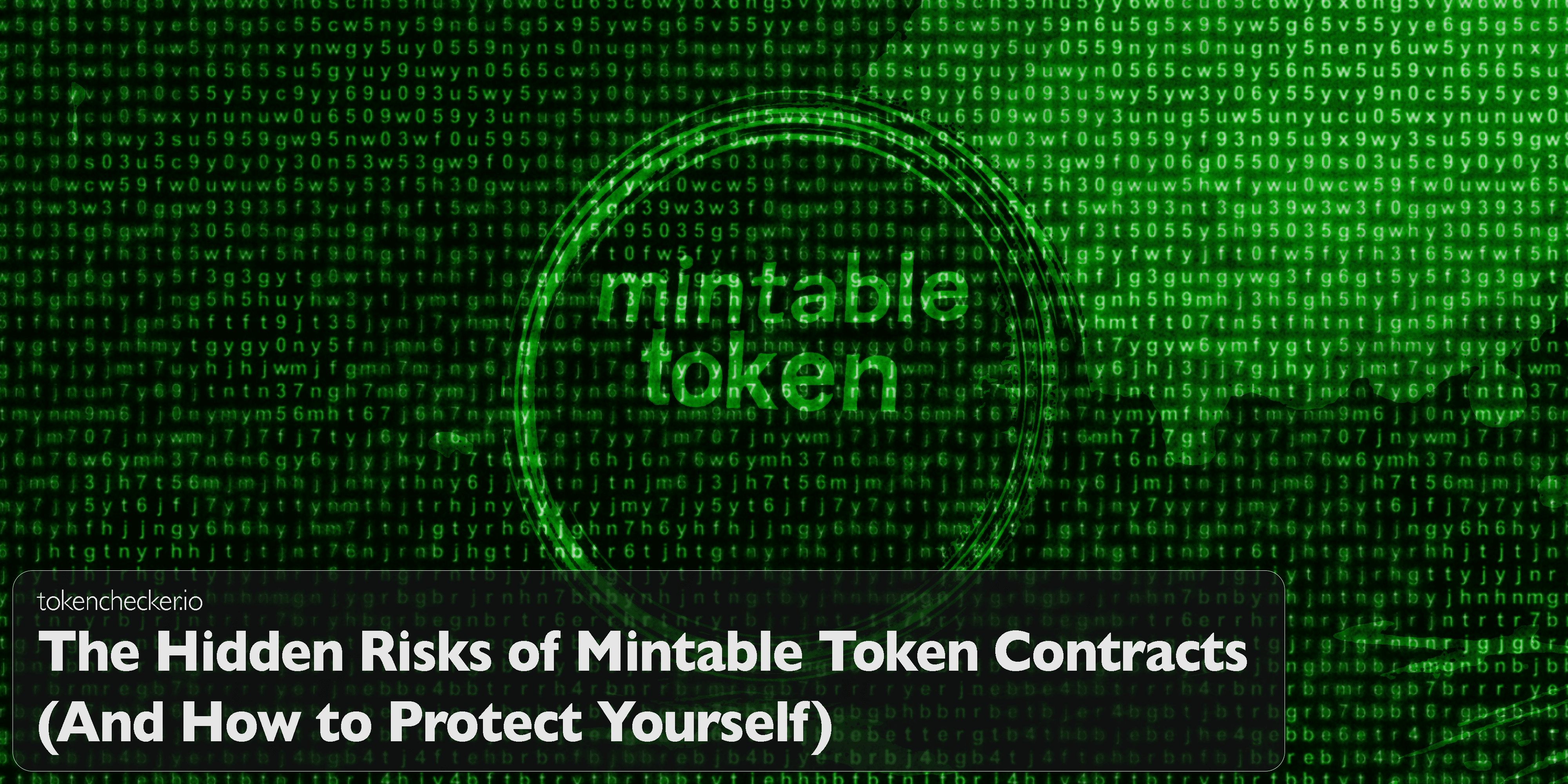
The Hidden Risks of Mintable Token Contracts (And How to Protect Yourself)
Introduction
Some crypto tokens have fixed supplies. Others can be minted over time. These are called mintable tokens. And while they can be useful for things like in-game rewards or stablecoins, they also introduce serious risks.
If you've ever seen a token suddenly flood the market with new supply and crash in value, minting was probably involved. In this article, we’ll walk through what mintable tokens are, how they can be abused, and what to look out for before you invest. We’ll also show how tokenchecker.io can help spot red flags early.
What Are Mintable Tokens?
Mintable tokens are designed so that more tokens can be created after launch. They usually live on Ethereum and follow the ERC-20 standard. The key function is `mint()`, which allows new tokens to be added to the supply.
This isn't always a bad thing. Minting helps manage rewards, stabilize value in certain systems, or raise funds. But if the wrong person has control or if the contract has bugs minting can lead to inflation, abuse, or total failure.
Where the Danger Really Starts
Anyone Can Mint
Sometimes, the mint function isn’t properly locked. This means any wallet can create new tokens. In worst cases, someone finds this loophole and floods the market overnight.
Even if minting is limited to one wallet, it’s still risky. If that wallet gets hacked or abused, the result is the same endless supply, crashing value.
Code Bugs
Even when access is restricted, small bugs in the logic can let attackers trick the contract into creating tokens. A single math error can open the floodgates.
There have been real cases where this happened. In one example, a project accidentally minted quadrillions of tokens due to a math flaw. Another allowed repeated minting through a reentrancy bug. You can read more about similar smart contract threats in our guide on the The 5 Most Dangerous Functions Found in Token Contracts.
Oracles and External Data
Some mintable tokens rely on price oracles to determine when or how many tokens can be created. If that oracle is compromised or wrong, attackers can mint tokens backed by fake value.
One high-profile case lost over $100 million this way.
The Long Game: Inflation and Soft Rugs
Not every token gets destroyed overnight. Some projects slowly mint more tokens to pay themselves, fund development, or keep users engaged. The problem? These new tokens dilute the value of existing ones.
If supply keeps growing and demand doesn’t, price drops. Sometimes, it's not a scam it’s just bad planning. Other times, it’s a slow rugpull. The team mints tokens to themselves over time and sells into the market, draining value from others.
Centralization and Trust
One of the biggest problems with mintable tokens is trust. Who can mint? How often? Under what rules?
If the answer is "one wallet, anytime," that’s a major risk. That person has full control over supply and can dump at any moment. Even if they don’t, the risk alone makes investors nervous.
Projects that use multisig wallets to control minting are a little safer. Even better: some remove the mint function entirely after launch by renouncing ownership. That way, no one can add to supply.
How to Protect Yourself
Check the Contract
Before buying, look at the token’s smart contract. On sites like Etherscan, you can search for a function called `mint()`. Then ask:
- Who can call it?
- Is it limited to a multisig?
- Is it disabled or renounced?
If the answers aren’t clear, the risk is high.
Use tokenchecker.io
tokenchecker.io makes this easier. It tells you:
- Whether the token is mintable
- Who controls minting rights
- Whether the contract is safe from known bugs or reentrancy risks
- If the minting wallet is behaving suspiciously
This helps you avoid relying on guesswork or trust alone.
Look at Tokenomics
Ask yourself:
- Is there a cap on total supply?
- How does the team explain minting?
- Is it for rewards, development, or something vague?
Minting should have a purpose, and it should be clearly communicated. If you're unsure how to identify a legit project from a scam, this breakdown will help: How to Tell If a Crypto Token Is Legit or a Scam.
Final Thoughts
Mintable tokens aren't automatically bad. But they demand extra caution. Without controls, minting can destroy a token’s value fast or drain it slowly.
Always ask: who controls the mint function, and what can they do with it? If the answers aren't public and provable, walk away.
tokenchecker.io gives you the tools to inspect mintable tokens and avoid hidden traps. Use it before you trade your wallet will thank you.